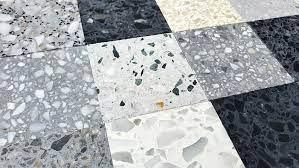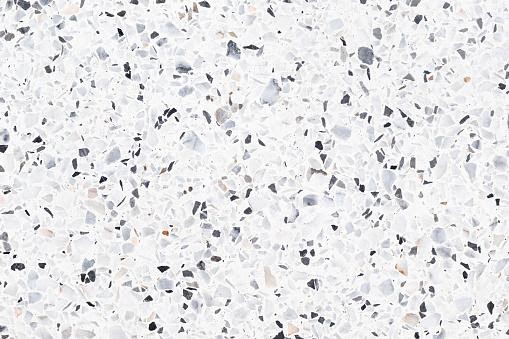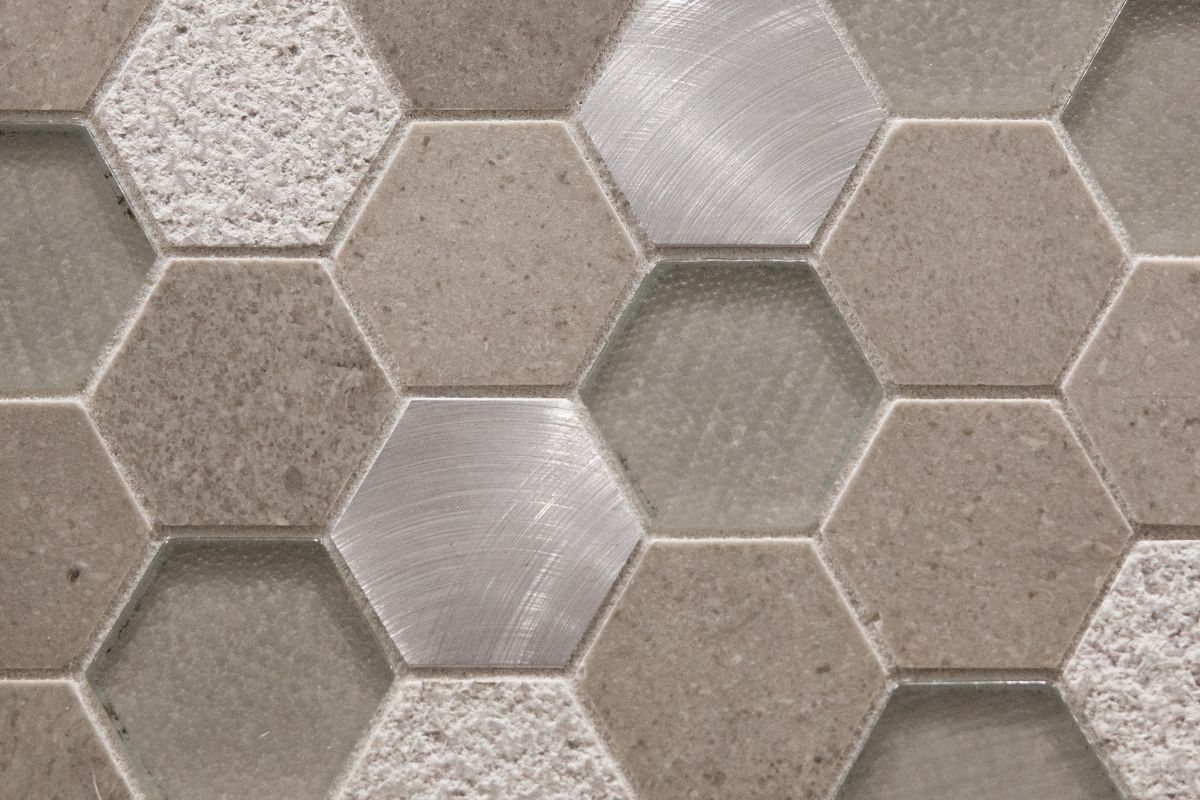
If you’ve been browsing Pinterest for kitchen or bathroom design ideas, you’ve almost certainly come across Terrazzo tiles. Terrazzo tiles have seen a surge in popularity over the last year, and we anticipate this trend will continue into 2021 and beyond.
Terrazzo Tiles have been featured in several design publications and are rapidly gaining popularity as a must-have in every house. They’re highly adaptable and may be integrated into both classic and contemporary house décor.
Terrazzo Tiles – What Are They?
Terrazzo tiles trace all the way back to the Middle Ages and were quite popular in the Mediterranean. They were initially fashioned from concrete speckled with pottery, marble, metal, and glass in Italy as a novel technique to use stone offcuts.
Terrazzo lookalike tiles are available in a variety of materials nowadays, including porcelain and resin. Terrazzo appearance tiles are an excellent method to add interest to a wall or floor and to create a focal point in any area.
What Are the Advantages of Terrazzo Effect Tiles?
Terrazzo Effect porcelain tiles are more durable than actual concrete Terrazzo. They are simple to maintain and need little continuous care. Porcelain Terrazzo tiles are water-resistant, making them ideal for bathrooms and damp spaces. Porcelain is scratch and stain-resistant, which is ideal for families with little children. Additionally, terrazzo effect tiles are less expensive than conventional tiles.
What is the best way to style Terrazzo Tiles?
Terrazzo Tiles may be styled in a variety of ways around the family home. Terrazzo tiles are an excellent way to add color to an otherwise neutral area without overwhelming the space.
For a striking effect, tile a whole wall in a single Terrazzo color. Consider using them sparingly and tiling halfway up the wall for a more subtle finish.
Terrazzo tiles, in our opinion, look fantastic in tiny places, such as a kitchen backsplash or around a bathtub. Additionally, we like the look generated when they are used in conjunction with simple metro tiles in a complementary color.
What are the best ways to integrate terrazzo into my home?
Terrazzo may be used anyplace in the house, it’s ideal for flooring, particularly when poured in liquid form to create a smooth surface, as well as kitchen countertops.’ ‘Some patterns are rather neutral, providing the ideal background for colorful accessories,’ he continues. Other terrazzo takes the stage with its vibrant colors and dramatic marble mixes.’
Meanwhile, Cassie Deborah, founder of homeware boutique Room 356 (which you can shop via Trouva), says that terrazzo has expanded beyond floors and tabletops: ‘Makers have begun experimenting with terrazzo as an abstract pattern rather than simply using the material, so expect to see more objects inspired by terrazzo.’ Terrazzo lamps, pillow coverings, kitchenware, and even carpets have been noticed, demonstrating how the diverse product range now available on the market allows you to incorporate terrazzo into many spaces of the house.
The next paragraphs will describe how to prolong the life of your terrazzo tiles.
Initial cleaning

It is important to remember that when a terrazzo tiles floor is originally installed, the cement will require time to cure. The floor may change color or seem speckled during this phase, which might continue for many days or weeks.
Following installation, it is usually prudent to cover the floor with appropriate foils. Avoid using colored writing boards and newspaper sheets on the floor, as they may transmit foreign substances, not to mention adhesive tape put directly to the terrazzo tiles.
Terrazzo flooring needs regular cleaning and maintenance using specialized materials to keep its finish looking new. Always do a test on cleansers in an inconspicuous region to ascertain their effectiveness. Never clean with acidic or alkaline cleaning chemicals, since they might cause the tiles to lose their sheen. Always utilize non-abrasive cleaning chemicals that are readily available.
To begin, wash using a neutral detergent diluted 1:10 in water (increase the concentration for stubborn dirt). Rinse well with lots of water and let it dry. Utilizing a single brush fitted with a liquid sucker simplifies the task.
General Upkeep
For routine surface cleaning without the use of wax equipment, wash with a neutral detergent (diluted in water); frequently rinse and wring the cloth in the detergent solution. To clean waxed surfaces, use a neutral detergent (do not use hot water). To preserve the terrazzo tiles’ brilliance, wash them periodically with a solution of the final wax used, diluted in water first (2 glasses of wax in a bucket of water).
On the market, any kind of cleaning and care product is readily available. Masetti Design Selection’s contemporary terrazzo flooring, like marble and granite, maybe polished over time. Visit http://bmfcarpetcleaninghouston.com/terrazzo-tiles-interior-tips-for-homeowners/ to read about Terrazzo tiles interior tips for homeowners.
Zones with high traffic
A particularly protective treatment is indicated in high-risk locations such as taverns, delis, and restaurants. The floor must be thoroughly cleaned with a degreasing detergent (diluted 1:10 with water). Apply an oil- or water-repellent, a dirt-repellent substance with a natural effect on a clean, dry surface (e.g. protection FILA MP90). Alternatively, a coating of final wax may be applied with a brush, cloth, or another appropriate applicator.
Along with regular sweeping and cleaning, these protective techniques can help maintain the beauty of your tile and add enduring brilliance to your home décor.
Because installing new terrazzo tiles is one of the most costly and time-consuming jobs you can do on your own, you want to maintain it looking as nice as possible. Simple actions may significantly extend the life of your floor, regardless of the kind. Here are some tips for maintaining the appearance of your terrazzo flooring:
– Prevent as much sunlight as possible from reaching the floor. UV radiation from the sun will fade or discolor your terrazzo floor. – Always put floor protectors beneath sofas and other heavy furniture unless you are in the room.
– Do not allow spills to sit. Remove immediately anything that may discolor.
– Utilize doormats and ensure that you clean your feet or remove your shoes before entering.
– When relocating a large piece of furniture that cannot be moved, use non-abrasive sliders to avoid damaging the floor.
– Dust and vacuum floors frequently to maintain their attractiveness and prevent trash buildup.
– When using bleaches, tile cleaners, mildew removers, oven cleaners, drain openers, and plant food, exercise care since these products contain powerful chemicals that may discolor the flooring.
– Always adhere to the manufacturer’s recommendations for safe materials to use on your flooring.
– Seal the grout to make cleaning simpler.
– Vacuum without a beater bar and clean the floor with a microfiber mop to avoid scratches.


